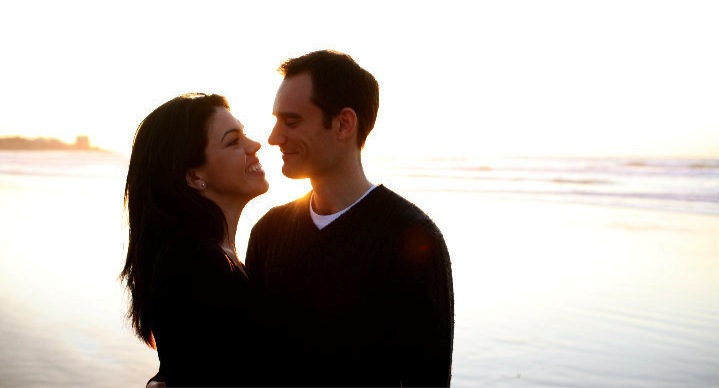Imagine hundreds of people dressed in their finest seated in a dining room. All of a sudden, the lights go out.
Darkness. Complete and total darkness.
The ballroom cheers, the waiters serve, and the sighted see how life might be if everyday they were Dining In The Dark.
This rare and unique sensory awareness experience takes guests on a journey of taste, sound, and touch as after being seated by visually-impaired servers, the restaurant lights are turned off and guests enjoy, or in many cases struggle, through their meal in darkness. Beginning in Germany in 1993 and with popularity spreading to Paris, Berlin, Vienna, and finally the United States in 2005, Dining in the Dark has now been experienced by thousands of people wanting a peek into the unfamiliar world of vision impairment.
This perspective-changing event was adopted by the Foundation Fighting Blindness several years ago, and is among their most successful events as they use the event to applaud innovative research and entrepreneurial efforts all while raising funds for the fight against blindness.
Tammy Hawkins, a longtime friend of mine who has Retinitis Pigmentosa (RP), recently spoke at a Dining In the Dark event in San Diego. Tammy’s tells the highly personal and inspiring story about her experience with Retinitis Pigmentosa and her commitment to raise awareness and continue the search for a cure. Read a little of what she had to say to the guests in attendance who had just moments before experienced the darkness she may one day know all too well.
“Eating dinner tonight was entertaining and interesting to experience what it might be like to be blind, but it is has a little different meaning for me as I am losing my vision. I have Retinitis Pigmentosa, an inherited, degenerative eye condition that causes a progressive loss of vision from abnormalities of the rods and cones in my retina. RP typically begins with night blindness and gradual loss of peripheral vision.
I inherited my Retinitis Pigmentosa from my Dad. He is now 66 years old and has only 4% vision remaining in one eye. I have a very large immediate and extended family so several of us are sharing this experience together. Of my dad’s 8 children, 4 of us have RP. It affects each of us differently. I am 27 years old and have just started noticing limitations in my vision. My closest sister, on the other hand, was recently diagnosed as legally blind at age 32.
What launched me into being proactive as an adult was becoming a mother. I have a 2 1/2 year old named Adam and an 8 month old named Valerie. I had always anticipated that I wouldn’t have to worry about whether or not my children had RP until they were teenagers and starting showing signs like I did when I was 12. When Adam was 1 year old, I learned that a cousin of mine in San Francisco had been working with Dr. Jacque Duncan and had found which gene our family’s mutation was on. Now I could get my children tested as babies by a simple blood test. My ophthalmologist found a company on the East Coast who could do the testing and ordered the lab work at our local doctor’s office. Adam and I had our blood drawn, we shipped the blood work overnight to Maryland, and we waited over a month to hear the results. We recently repeated the same process for Valerie when she was only 5 months old. I chose to have my children tested young so that I would know how proactive I would need to be in both preventative care and fighting for a cure for them.
When I received their results and found out that both of my children tested negative for RP, I was so relieved. For just a second, I thought ‘Great, now I don’t have to fight as hard for a cure.’ Then that second passed and I remembered that my vision is worth fighting for too. I want to drive my kids to high school dances, see their college graduations, and all other major life milestones. Not to mention, I have 18 nieces and nephews, a few of which have already been confirmed as having Retinitis Pigmentosa. My first step has been to start becoming more educated about the causes and most promising treatments. I recently met with Dr. Zhang at UCSD and have donated my blood to his research pool. I have a lot to learn and much more to do, but I am becoming increasingly hopeful that this generation, thanks to companies like Illumina, will be the one to find a cure for these diseases. I’m also proud to be part of the Foundation Fighting Blindness – whether it is funding researchers like Dr. Zhang and Dr. Duncan who are identifying new genes, or supporting cutting edge research like stem cell therapy or optogenetics, the Foundation is making a difference for millions of people.
I am young, but I am excited as I feel there has never been a time when the future of research and progression has been so bright. Thank you for being here and helping people like me fight for a cure for our blindness.”
Congratulations both to Tammy and the Foundation Fighting Blindness for their ongoing efforts like Dining In The Dark as they raise funds and awareness of the hope and fight for a cure to degenerative retinal eye disease.
To watch the YouTube video of Tammy’s speech at Dining In The Dark, click here
Read more about the history and questions raised by Dining In The Dark, click here
To watch a news story describing Dining In The Dark, click here
To learn more about Retinitis Pigmentosa, click here
To lighten up the mood, have a few laughs, and watch Ellen’s version of Dining In The Dark, click here










